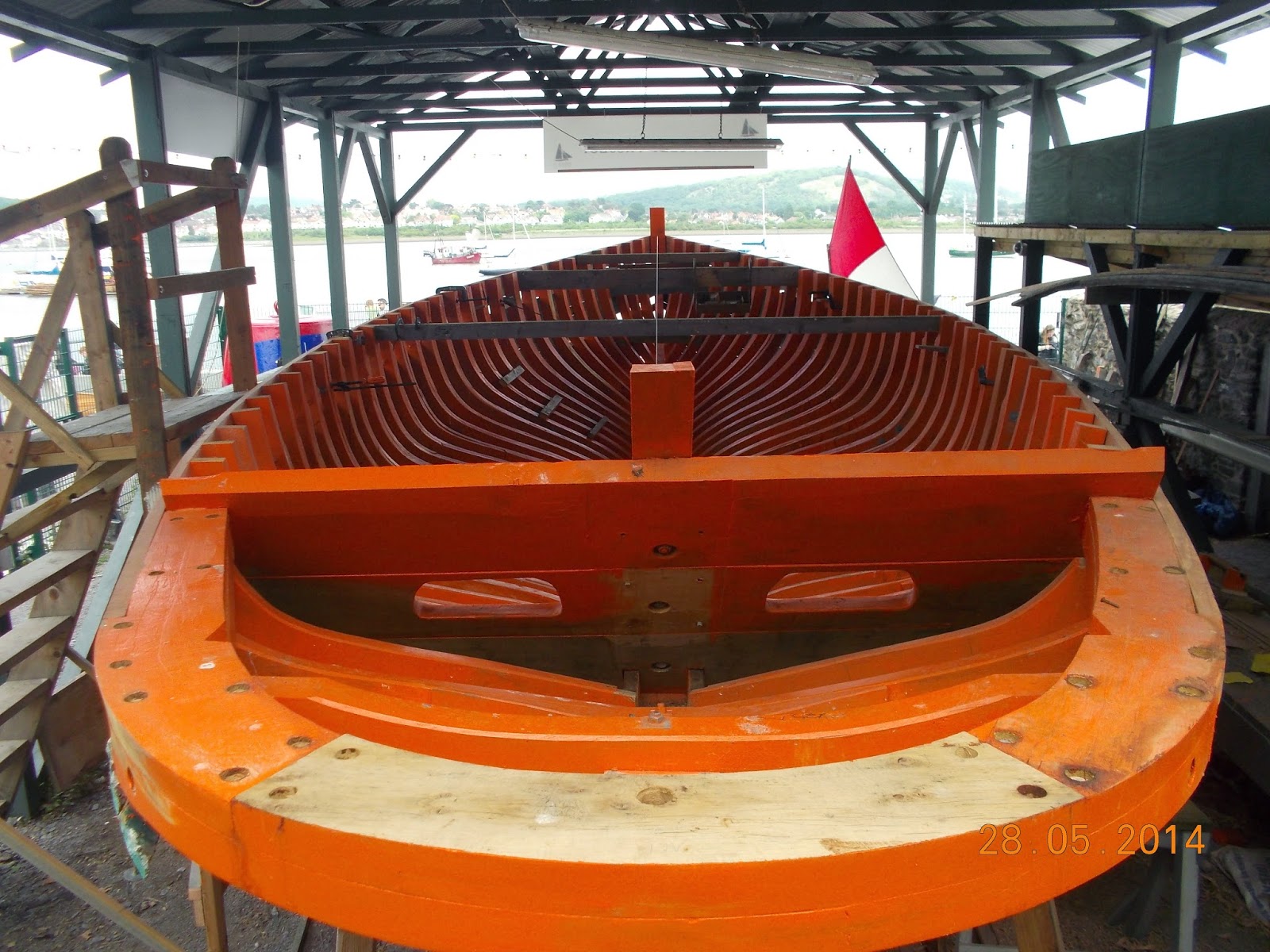MAKING A PLANK FOR HELEN II
First a baton (bendy piece of wood ) is fixed to the hull to show where the bottom of the new plank is to fit.It is then adjusted to make a
fair line( smooth curve )
Dave achieves this by tilting his head left (port) then right (starboard) with suitable chanting !
A strip of ply is fitted into the plank space and tacked with nails (it doesn't need to be a good fit but it should not touch either side.)
Dave then slides a block along the top plank and marks the lower edge of his block onto the ply.
He then does the same along the baton below, marking it on to the ply.
This shows the space from these drawn lines to the edge of the new plank.
Dave takes the ply strip and tacks it to the chosen tree plank.
Then he slides the block along the lines he drew on the ply before and carefully draws along the opposite side of the block.
This gives an exact copy of the space the plank will fit in !
Dave, the apprentice , cuts along the drawn lines to create the rough plank. (it keeps him busy and he always emerges smiling.)
This is then put through the planer and a small angle added to the top and bottom of the plank to allow for caulking later.

This is then clamped tight against the frames (ribs) and also the plank above .Pilot holes are drilled in the plank to the frames and nails hammered home for a tight fit.
( This gives Dave even more to do !)
The clamps are removed and the job complete.......
I now use this technique for making templates around the house.My wife is amazed and now I have more work to do !!!!!!!!
 On this particular Wednesday, at least 3 retired shipwrights saw Dave working and came to reminisce about their time in ship building in Liverpool, Devon and Tyneside.
On this particular Wednesday, at least 3 retired shipwrights saw Dave working and came to reminisce about their time in ship building in Liverpool, Devon and Tyneside. Meanwhile shipwright Dave cut and welded these brackets to add extra support in the stern (left) and the bow right). They will be galvanized before final fitting.
Meanwhile shipwright Dave cut and welded these brackets to add extra support in the stern (left) and the bow right). They will be galvanized before final fitting.














































